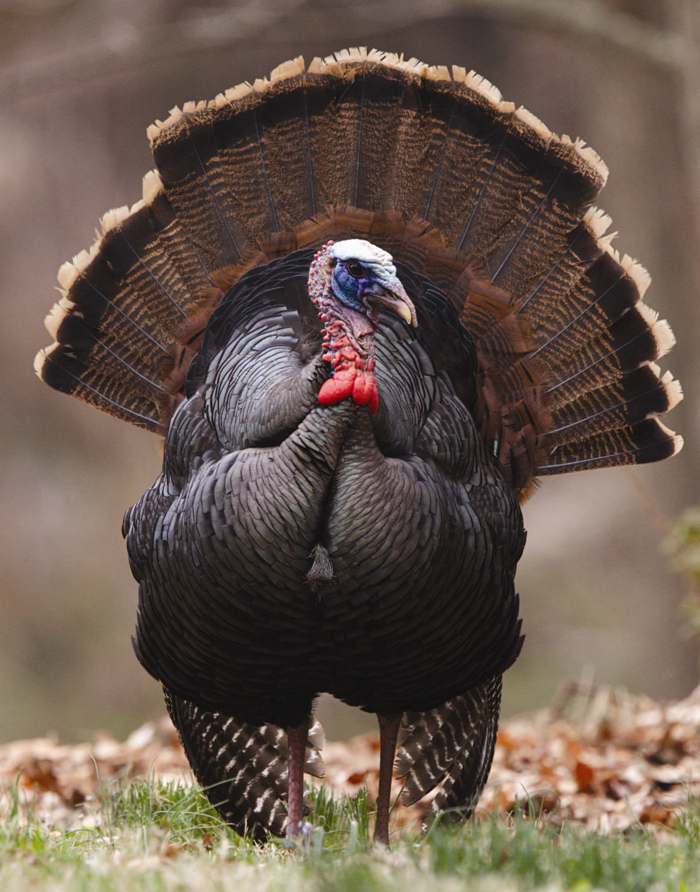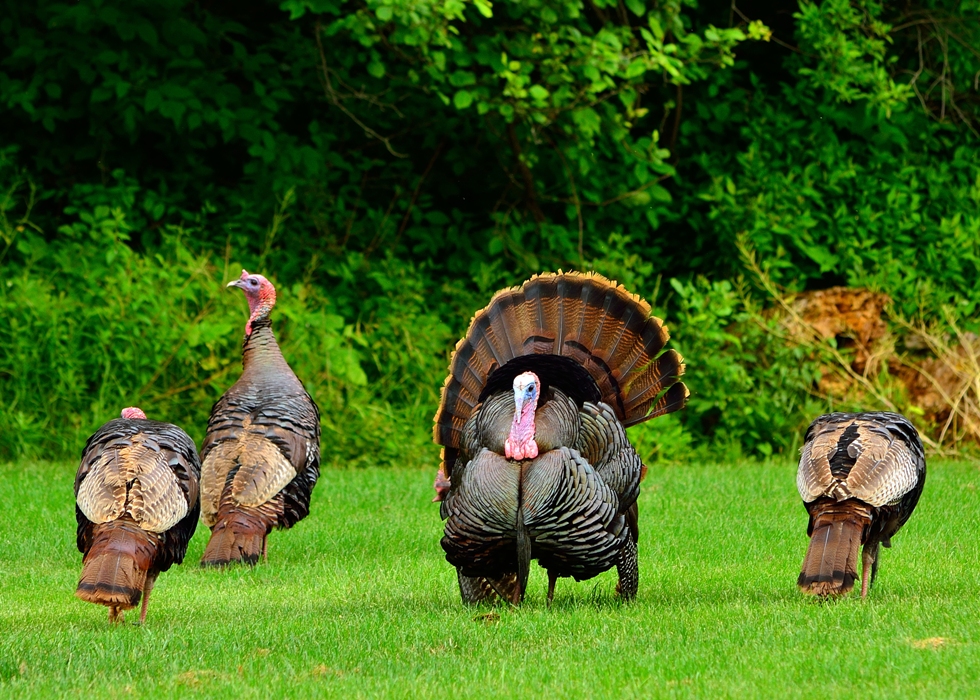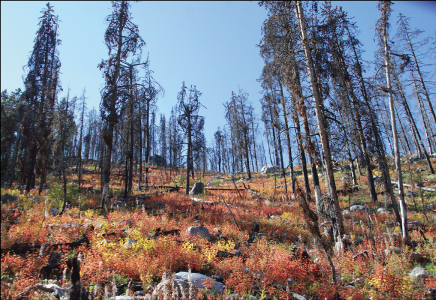Tempting Turkeys to Your Woods
 On June 20, 1782, the fledgling U.S. Congress formally adopted the bald eagle as its official bird and symbol of the nation. Benjamin Franklin, the prominent inventor and statesman, was famously unhappy about it. He fervently believed the wild turkey to be far more representative of the new republic. In a letter to his daughter, after disparaging the bald eagle, he wrote:
On June 20, 1782, the fledgling U.S. Congress formally adopted the bald eagle as its official bird and symbol of the nation. Benjamin Franklin, the prominent inventor and statesman, was famously unhappy about it. He fervently believed the wild turkey to be far more representative of the new republic. In a letter to his daughter, after disparaging the bald eagle, he wrote:
“the Turkey is in Comparison a much more respectable Bird, and withal a true original Native of America.... He is besides, though a little vain & silly, a Bird of Courage, and would not hesitate to attack a Grenadier of the British Guards who should presume to invade his Farm Yard with a red Coat on.”
A wild turkey’s fortitude in a fight would undoubtedly live up to Franklin’s characterization. When cornered, this sizeable gamebird will kick, stab with its spurs, bite and body slam its attacker. That said, it prefers to run or fly than fight. It can sprint for cover as fast as 25 miles per hour or wing away at speeds more than 55 miles per hour.
But even with these multiple methods of self-defense, by the 1930s, the wild turkey almost disappeared from American forests due to over-hunting and loss of habitat.
Wild turkey revival
In one of conservation’s greatest success stories, the population of wild turkeys in the United States has grown from a low of 30,000 in the 1930s to 7 million. Today—thanks to government-funded conservation programs and efforts of hunter-supported groups such as the National Wild Turkey Federation (NWTF)—wild turkeys strut, gobble and cluck in 49 of the 50 states (excluding Alaska, which is too cold for nesting success).

“Wild turkeys, no matter the type of turkey or their location, have four universal needs,” says Tom Hughes, assistant vice president for conservation programs for NWTF and a certified wildlife biologist. “They must have access to permanent water in their home range as they need water daily. The trees must be big enough to get them off the ground and out of reach of predators while night roosting. They need good nesting habitat, open enough for hens to go through but closed enough to protect from avian predators. And they require mixed grassy areas that produce lots of bugs, a readily digestible source of protein for poults [young turkeys]. Hens will produce more poults than predators take in good brood habitat. Maintaining good brood habitat is as important as anything a landowner can do.”
By good brood habitat, Hughes refers to an early successional plant community. When a section of mature forest is harvested or burned, succession is reset. During the first year, annual weeds and grasses appear, followed by perennial grasses and broadleaf plants—the early successional phase. Then shrubs and saplings take over, and finally, if left unchecked, mature forest develops again, or grassland or shrub-land in the case of hot, dry climates.
In early successional habitat, young turkeys can move about and forage for food easily yet they are shaded from the sun and buffered from raptors. The more early successional habitat among your trees, the more wild turkeys you’ll attract, a management strategy that Salem and Diane Saloom, owners of a 1,762-acre managed forest in Alabama and 2010 National Tree Farmers of the Year, have successfully followed.
“When we started tree farming in 1983, one to two percent of our property was open area,” explains Salem Saloom, vice chair of the American Forest Foundation’s woodlands committee. “It was originally more hardwood bottoms and upland hardwoods and pines. As we’ve transitioned to longleaf pine, five to six percent of our property has become more open. We’ve got a lot more wild turkey. It’s wonderful!”
Saloom, an avid turkey hunter, relies on prescribed burning to maintain areas of early successional habitat in his woodlands.
“We start burning one year after planting,” says Saloom, “Longleaf pine is a fire-dependent species. It stays in the grass stage for three to four years. Once out of the grass, I call it the rocket stage, when it catches up to other pines, size-wise. It’s fire tolerant. Its needles protect its terminal bud. Fire decreases competition, disturbs the ground, exposes soil to sunlight and rain and increases the nutrients in the soil. Native grasses return. New forbs, new legumes grow. It’s a virtual food plot for wild turkeys until the crown coverage blocks out the sunlight.”
While the Salooms’ forest benefits from a humid climate and a long growing season, certainly not all Tree Farms can tolerate annual controlled burning. The frequency of controlled fire depends on the location of your Tree Farm, soil fertility and amount of rainfall.
“When the shrubs are waist high or they’re too hard for humans to walk through, turkeys will have trouble too,” says Tom Hughes of the NWTF. “In the South, you might have to burn every year or every other year. In the West, it might be every five years. It depends on how quickly a site re-vegetates.”
Wild turkey missteps

shelter. Within 10 days to two weeks of hatching, poults can fly to low branches, putting them out of reach of ground predators and greatly increasing the odds of reaching adulthood. An adult wild turkey, which can weigh more than 20 pounds, needs a hefty limb on which to roost at night. In addition, wild turkeys depend on seeds and nuts for food during the fall and winter. However, according to Hughes, the biggest mistake Tree Farmers make when trying to maintain a healthy wild turkey population is managing for good fall-winter habitat.
“Wild turkeys love acorns, so you think you should grow lots of acorns,” says Hughes, “That’s good, but not as critical as brood habitat. Brood rearing is the limiting factor when it comes to managing forests for wild turkeys. You may have a beautiful oak forest but not many turkeys.”
Both Hughes and Saloom strongly recommend getting local advice from forestry commissions, U.S. Department of Agriculture Natural Resources Conservation Service (NRCS) offices, state wildlife agencies and conservations groups with local chapters such as the NWTF and The Nature Conservancy. These groups not only provide information on how to effectively manage for wild turkeys but also funding and, in some cases, assistance with activities such as controlled burning. In Saloom’s case, funds from the Farm Bill helped pay for site preparation, including herbicide treatment and the purchase and planting of longleaf pine seedlings.
“It costs us about $160 to $175 per acre to transition to longleaf pine,” says Saloom. “By this December, we’ll have 610 acres of land in longleaf. The conservation programs of the Farm Bill co-shares 50 percent. It’s a huge source of support.”
Wild turkey rewards
Having wild turkeys on your property can provide several key benefits: the satisfaction and entertainment of watching turkeys during their mating rituals and raising their young, the chance to hunt them yourself and as a source of income by charging access fees to others who wish to hunt in your woodlands.
“When I started tree farming, I formed a hunting club,” says Saloom. “It helps offset the expenses of the Tree Farm. There are only five people in the club, a small group.”
“I enjoy being outside,” says Saloom, who opened his 21st straight wild turkey season on his Tree Farm last spring. “A lot of my spirituality comes from being in the woods. Once turkeys got under my skin, it became a passion. It’s about being in the woods when it’s waking up. Hearing that first gobble is part of it. I always come back with a story about turkeys or something else that happened.”
As with any wildlife species, maintaining a healthy population of wild turkeys on your property requires planning and stewardship.
“Management is key,” says Saloom. “It’s not just about planting, walking away and then coming back in 20 years to cut the timber. If you want wild turkeys, you must manage the entire ecosystem—the water, the soil, the sunlight—as well as grow the trees.
Basic Needs for Wild Turkeys
- Food: Turkeys are omnivores that eat grass and forbs, especially young, tender green vegetation, as well as fruit, nuts and insects. They will also eat grain from farm fields.
- Cover: A mix of open fields and pasture and forested land is essential for their survival. Turkeys tend to roost in mature, large-diameter hardwood trees.
- Water: Turkeys need water almost daily, so hens rarely nest far from a reliable water source such as a creek, spring, seep or pond.
- Space: A good-quality habitat will support one bird per 30 acres (one flock per 640 to 800 acres). But because turkeys need a lot of living space, they may not remain on your property year-round unless it’s 1,000 acres or more.
For more information about wild turkeys, visit AFF's site for woodland owners, My Land Plan, or the National Wild Turkey Federation website.










How make plan of setup small project of keep Turkeys
Please usmail materials and copies please to:
Walter Dennis
P.O.Box 983
Grand Bay, Alabama
36541l
Alumni, 1962
Alumni, 1968
CWB
RF
TWS